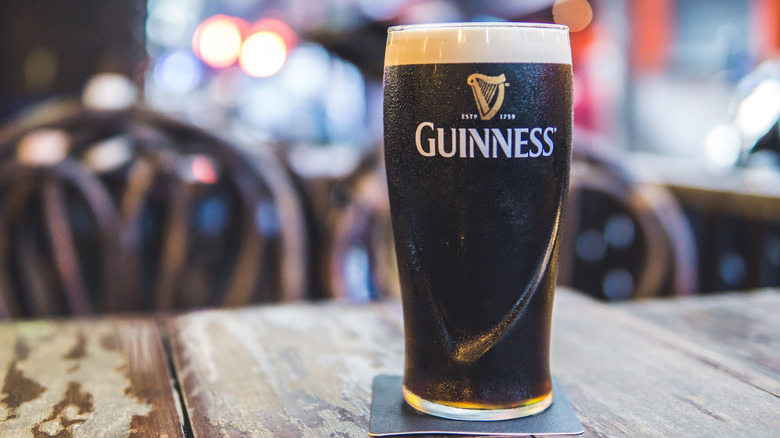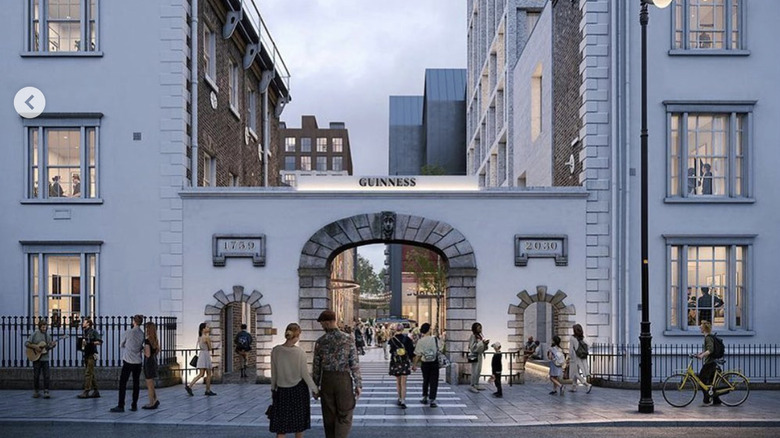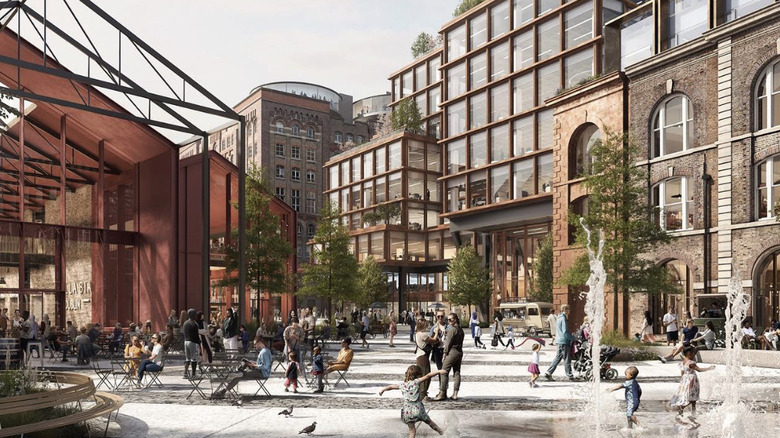Soon, You Can Live Inside A Guinness Brewery
People will soon be able to live within the walls of Guinness' extensive St. James Gate brewery in Dublin, Ireland. Guinness hopes to transform the grounds of their historic Dublin brewery into a residential space called "Guinness Quarter," reports Food & Wine.
The project will be "a world class, modern, and dynamic urban neighborhood," says real estate developer, Ballymore. In August 2022, Ballymore and Guinness parent company, Diageo, revealed that they applied for the ambitious project's planning permission. The plan for the Guinness Quarter is extensive. The proposed urban space includes over 300 apartments, two acres of parks, an entertainment venue, a food hall, a hotel, and commercial spaces — not to mention 2,000 bicycle parking spaces.
St. James's Gate has been home to Guinness since 1759 and is based in Central Dublin (via Ballymore Group). The new plans are done to refurbish heritage structures but also preserve the area's history, explains Sean Mulryan, Ballymore CEO (per Food & Wine). Although the project is estimated to be finished sometime within the next 10 years, Mulryan guaranteed it will be one of the "finest" representations of the community.
Guinness' home has a rich history
The planned Guinness Quarter will reside in Dublin's historic neighborhood known as The Liberties, according to Food & Wine. In the medieval period, Dublin's central city, much smaller than today, sat behind high walls, explains The Liberties Dublin. A corporation and guilds controlled the area within the walls, and the neighborhoods outside were known as the liberties. The name arose from the decision King Henry II made to give an Abbey of St. Thomas monks the ability to control the area and trade within their liberty. The Culture Trip calls the liberties something of a medieval suburb. A vibrant craftsman industry grew within the area during the 16th and 17th centuries (via The Liberties Dublin). At the turn of the 19th century, the neighborhood's prosperity declined due to English trade restrictions on Irish products.
Although breweries like Guinness and whiskey distilleries, like Jameson, began to thrive in the area, the neighborhood became known for its extreme poverty and poor living conditions. However, progressive housing initiatives and other philanthropic ventures rose to support the working classes.
While the former liberties buildings no longer exist, the name has stuck around. Today it's well-known for its community pride and charm (per Culture Trip). A local street artist, Fink, explains, "It's the personality of The Liberties that drew me to start to paint here around 15 years ago. It really is the heart and soul of Dublin."
Project leaders look to the future but keep an eye on the past
The Guinness Quarter is designed to honor the Liberties' centuries of vibrant history (via Food and Wine). Diageo's managing director in Ireland, Barry O'Sullivan, said of the project, "It is a unique and special place. The plan that has been created respects this historic community while also transforming it into one of the most dynamic neighborhoods in Europe."
In addition, Ballymore CEO, Sean Mulryan, expresses how important it is to preserve Guinness' culinary and social importance (via Ballymore Group). Guinness has come to mean something to so many people around the world, it's more than just a brand, he noted. All in all, Mulryan ensured that when it came time for the grand opening, he wanted it to feel like a place where people could have "memorable experiences." With the proposed Guinness Quarter, the Liberties will embark on a new era of commerce, culture, and excellent stout.


